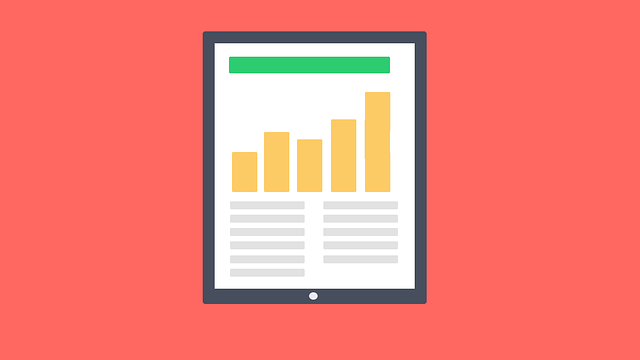Internal linking is a vital SEO strategy that guides search engines and improves user experience by creating a clear website hierarchy and relevant content connections. By using "internal linking for SEO" as a transactional keyword, websites can capture targeted traffic and optimize landing pages. Effective strategies include optimizing anchor text, placing links naturally, and crafting compelling calls-to-action (CTAs) that align with user intent. Measuring success through CTRs, page views, and session durations helps refine the internal linking strategy, ensuring content is well-structured, engaging, and beneficial for both users and search engine rankings.
In the intricate world of search engine optimization (SEO), internal linking stands out as a powerful strategy. This article delves into the art and science of internal linking, exploring its pivotal role in enhancing SEO performance. We’ll uncover the benefits of using transactional keywords to drive targeted traffic, optimize landing pages for user experience and search rankings, and craft compelling calls-to-action (CTAs). Additionally, we’ll present strategies to boost click-through rates (CTR) through strategic link placement, culminating with key metrics for evaluating the effectiveness of internal linking tools.
- Understanding Internal Linking: Its Role in SEO Strategy
- The Power of Transactional Keywords for Targeted Traffic
- Optimizing Landing Pages for Better User Experience and Search Engine Rankings
- Crafting Compelling Calls-to-Action (CTAs) for Internal Linking Campaigns
- Strategies to Enhance Click-Through Rates (CTR) through Strategic Link Placement
- Measuring Success: Key Metrics for Evaluating the Effectiveness of Internal Linking Tools
Understanding Internal Linking: Its Role in SEO Strategy

Internal linking plays a pivotal role in any SEO strategy. By connecting relevant pages within your website, internal linking helps search engines understand the hierarchy and relevance of your content. This strategic navigation aids in distributing link equity, enhancing crawlability, and improving overall site architecture. In essence, it enables search engines to better index and rank your pages, thereby increasing your website’s visibility and traffic.
For optimal SEO optimization, consider implementing internal linking in a thoughtful manner. An internal linking tutorial or tips can guide you on creating relevant anchor text, strategically placing links, and ensuring a natural flow of links across your site. This approach not only boosts your search engine rankings but also improves the user experience by providing seamless navigation and access to valuable, interconnected content.
The Power of Transactional Keywords for Targeted Traffic

In today’s digital landscape, understanding the power of transactional keywords is key to unlocking targeted traffic and enhancing your internal linking for SEO strategy. These keywords act as powerful tools that directly reflect user intent, making them invaluable for optimizing landing pages. When a user searches for a specific term related to “internal linking for SEO” or seeks guidance through an “internal linking for SEO tutorial,” the right transactional keyword can precisely match their query. This targeting ensures that your content is not only relevant but also tailored to meet the exact needs of potential visitors, driving more qualified leads and improving overall search engine rankings.
By incorporating these keywords naturally into well-crafted landing pages, you create a seamless experience for users navigating through your site. For instance, an internal linking for SEO strategy page that utilizes transactional keywords effectively can attract individuals actively looking to improve their website’s architecture and discoverability. This strategic approach not only boosts organic traffic but also fosters a user-friendly environment, encouraging visitors to explore more of your content and ultimately enhancing your online presence in the process.
Optimizing Landing Pages for Better User Experience and Search Engine Rankings

Optimizing landing pages is a crucial step to enhance user experience and boost search engine rankings, especially when implementing internal linking strategies for SEO. By creating dedicated landing pages for specific tools or resources, you can ensure that your website provides a clear and focused journey for users. This approach allows you to tailor content to address the unique needs of visitors searching for these particular solutions, improving engagement and satisfaction.
A well-optimized landing page for internal linking should include relevant keywords naturally integrated into headings, meta descriptions, and body text. This practice helps search engines understand your page’s context, making it more likely to rank higher in related searches. Additionally, internal linking for SEO tutorial recommends using compelling calls-to-action (CTAs) to encourage users to explore further, reducing bounce rates and encouraging deeper engagement with your website’s content.
Crafting Compelling Calls-to-Action (CTAs) for Internal Linking Campaigns

Crafting compelling calls-to-action (CTAs) is an art that can significantly boost your internal linking for SEO efforts. When designing CTAs, keep in mind that clarity and urgency are key. Use straightforward language that leaves no doubt about the desired action—whether it’s “Explore Our Resources,” “Start Your Free Trial,” or “Unlock Full Potential.” A well-placed CTA not only guides users but also reinforces the value of clicking through to another page within your site.
For internal linking for SEO tutorial enthusiasts, remember that each CTA should align with a specific user intent and target page. For instance, if you’re promoting an in-depth blog post on “SEO Optimization Tips,” your CTA could be “Dive Deep into Our Expert Tips.” This approach not only encourages users to engage but also helps search engines understand the context and relevance of internal links, contributing to improved SEO optimization for your site.
Strategies to Enhance Click-Through Rates (CTR) through Strategic Link Placement

To enhance click-through rates (CTR) and improve search engine optimization (SEO), strategic internal linking is paramount. One effective strategy involves placing links to relevant, valuable content within the context of your pages’ content. This not only provides a seamless user experience but also signals to search engines that your site is well-structured and informative. For instance, if you’re writing a comprehensive guide on “Internal Linking for SEO Tutorial,” link to related articles like “Best Practices for Internal Linking for SEO Strategy” or “Advanced Techniques in Internal Linking for SEO.”
Additionally, utilizing anchor text that’s both descriptive and enticing can significantly boost CTR. Instead of generic links like “click here,” use phrases that convey the value of the linked content—for example, “dive into advanced techniques” or “explore best practices.” This not only makes your internal linking more user-friendly but also helps search engines understand the context and relevance of each link, thereby improving your site’s SEO.
Measuring Success: Key Metrics for Evaluating the Effectiveness of Internal Linking Tools

Measuring success is a crucial aspect when implementing tools for internal linking, as it allows you to assess the effectiveness and impact on your SEO strategy. Key metrics to evaluate include click-through rates (CTRs) from internal links, which indicate user engagement and interest in the linked content. By tracking these rates, you can identify high-performing pages and topics that resonate with your audience.
Additionally, monitoring page views and average session durations related to internal links provides insights into the overall quality of your website’s architecture. A well-optimized internal linking strategy should encourage users to explore more pages, resulting in higher engagement metrics. Internal linking for SEO tips involves analyzing these data points regularly to refine your approach, ensuring that your content is not only linked internally but also effectively guiding visitors through your site’s information hierarchy.
